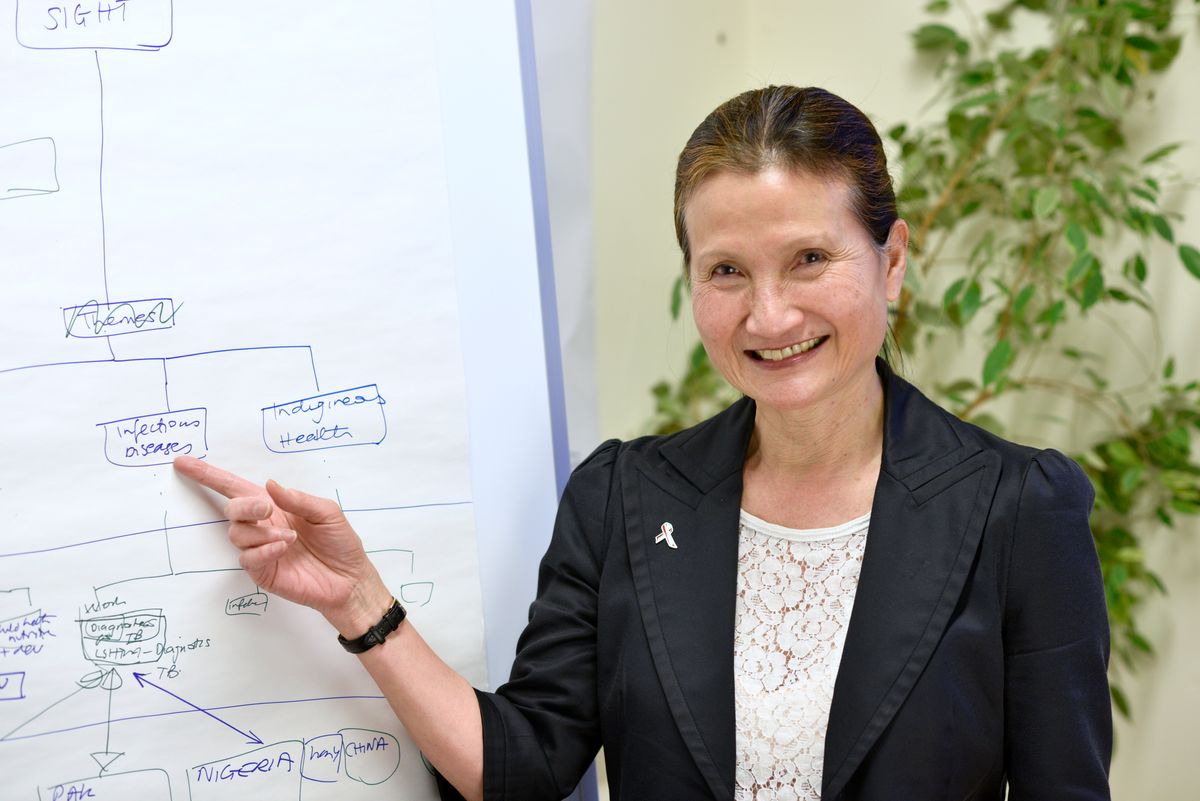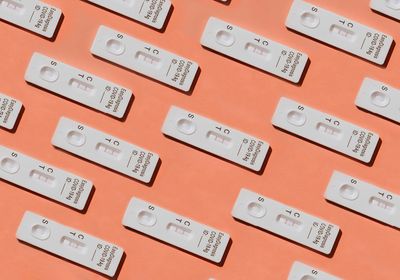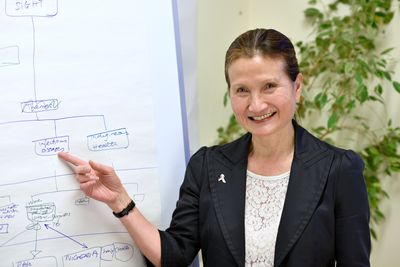ABOVE: Lateral flow antigen tests, also known as rapid tests, have a rich history in infectious disease detection and now enable self-testing as a key covid mitigation strategy. © iStock, Ana Garcia
Scientists and public health experts built the COVID-19 pandemic response on years of experience navigating infectious disease outbreaks. Although lateral flow immunoassays have been central to clinical diagnostics for over six decades, their public health use during the pandemic cast a new spotlight on this veteran testing technology.1
Medical microbiologist Rosanna Peeling is no stranger to progress in diagnostic testing. After establishing a national screening program for chlamydia infections in Canada, she led the Health Canada National Laboratory for Sexually Transmitted Diseases. Peeling then joined the World Health Organization (WHO) as Head of Diagnostics Research in Tropical Diseases, where she coined the concept of ASSURED diagnostics. The tenants of ASSURED embody three key ideals in diagnostic approaches—accuracy, affordability, and accessibility.2 At the London School of Hygiene and Tropical Medicine (LSHTM) and International Diagnostics Centre (IDC), her current research focuses on test development, evaluation, and implementation in developing countries.
In an interview with The Scientist, Peeling explained how lateral flow antigen tests emerged as a solution to accessible and affordable diagnostics for sexually transmitted infections, highlighting how self-testing became the star of the COVID-19 public health response, and her wish list for rapid tests in the future.

Q. What tests were initially involved in infectious disease diagnostics?
For chlamydia, at first scientists cultured the bacteria in the laboratory, which took at least 72 hours. This strategy was not very good because by the time you transported the specimen back to the laboratory from the clinic, the bug may have died. We needed a method that would not require culture that was accessible to primary health care physicians, clinics around the city, or remote areas. In the 1990s, scientists started using molecular tests, including PCR and antigen tests that were not quite like today’s lateral flow assays. These tests still required instrumentation, but they were much more accessible. To increase the sensitivity and specificity of these assays, we needed molecular tests that detected DNA, but those were not accessible financially or physically at the time. For laboratory-based immunoassays, scientists purify the antigen from the sample and incubate it in a well for 30 minutes to an hour. In contrast, the reaction in a typical lateral flow assay takes only seconds. We gradually progressed to lateral flow assays, which are accessible and affordable, but not as sensitive as laboratory-based immunoassays.
Q. Aside from the COVID-19 pandemic, are there other examples of lateral flow self-testing that have contributed to infectious disease diagnostics?
Rapid tests for HIV were among the first lateral flow assays for self-testing. The Federal Drug Administration (FDA) first approved HIV self-testing in 2012 based on modeling by the Centers for Disease Control and Prevention (CDC), which showed that self-tests at a pharmacy or at home would help countries achieve the famous 90-90-90 target set by the United Nations and WHO. The goal is for 90 percent of those who are infected to know their status through testing, 90 percent of those who test positive to have access to treatment, and 90 percent of those who are treated to become viral-negative or controlled. For HIV, the implications of testing positive are still enormous. Even with treatment, there is stigma and uncertainty. People like having the option to test themselves in the convenience of their own homes without going to a testing center.
Q. What made at-home testing so successful as a COVID-19 public health response?
Diagnostics are not only for case detection. The threshold of SARS-CoV-2 virus transmission is about one million viruses per specimen from the nasal passage. If a patient has a viral load below that, the chance of transmission is low. COVID-19 lateral flow tests detect up to roughly one million viruses per sample, so they detect the people with the highest risk of transmission. These tests took on a new and important public health role to interrupt the chain of transmission within communities.
Q. What future do you envision for self-testing with lateral flow assays?
I think simple rapid tests that allow clinicians and families to know whether an infection is bacterial or viral would be ideal. We would like to develop tests that reduce unnecessary prescriptions for antibiotics, and tests for diseases of epidemic potential that we want to detect early, such as respiratory syncytial virus (RSV), influenza, and coronaviruses. That is the biggest wish list right now.
This interview has been condensed and edited for clarity.
- Andryukov BG. Six decades of lateral flow immunoassay: from determining metabolic markers to diagnosing COVID-19. AIMS Microbiol. 2020;6(3):280-304.
- Land KJ, et al. REASSURED diagnostics to inform disease control strategies, strengthen health systems and improve patient outcomes. Nat Microbiol. 2019;4(1):46-54.


